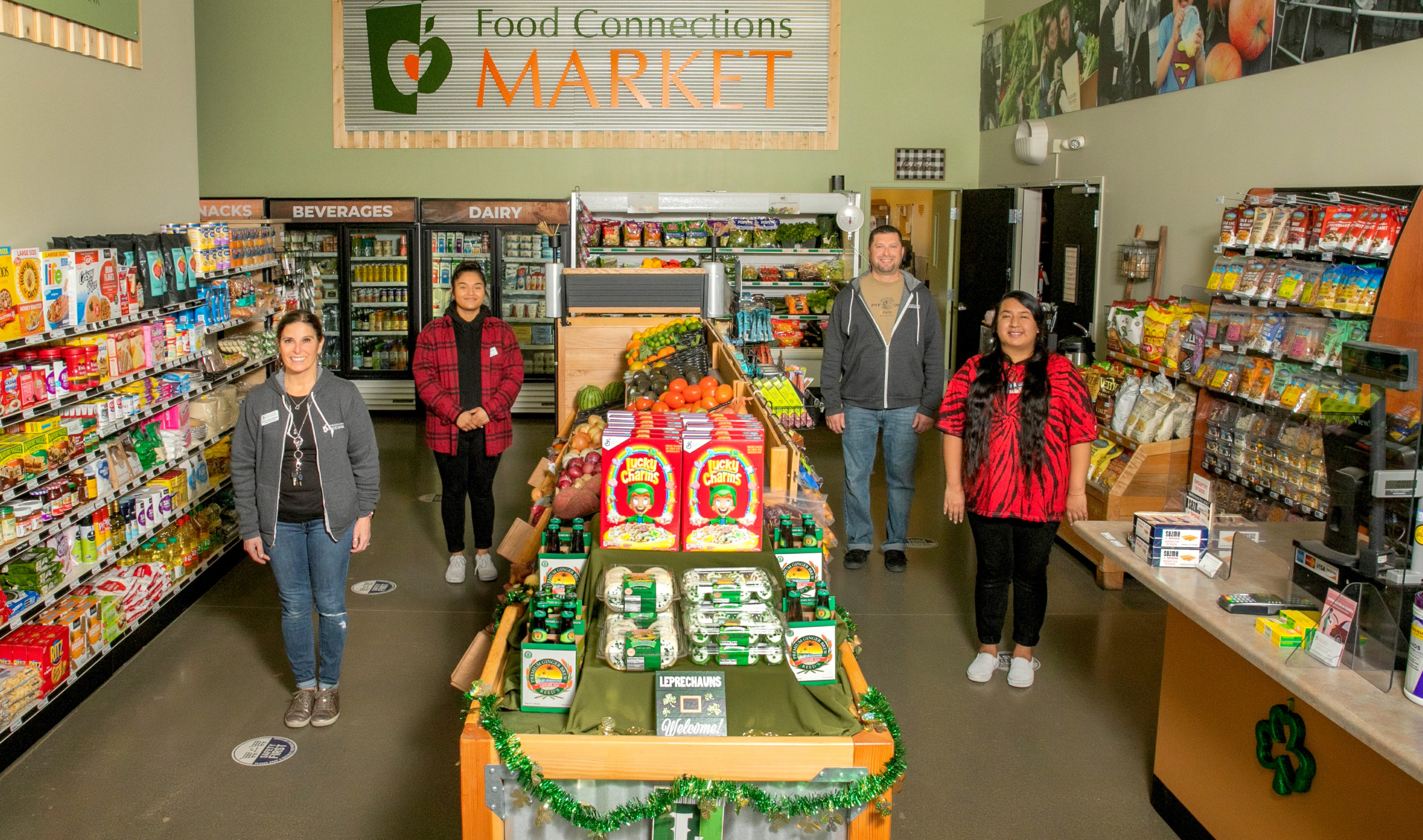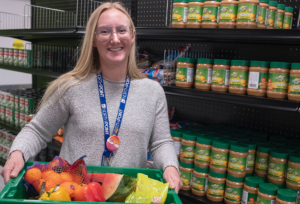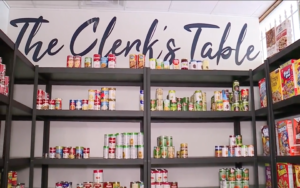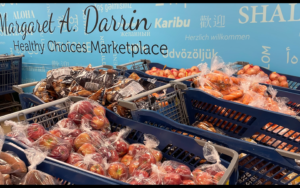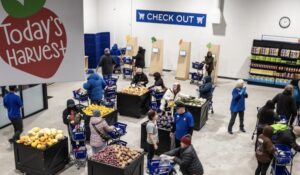In keeping with food banks across the country that are experimenting with new ways of reaching out to clients, Redwood Empire Food Bank is expanding offerings at its one-of-a-kind grocery store for low-income people.
Its Food Connections Market, located next to Redwood Empire’s warehouse, is not a food pantry, a food co-op, nor your typical grocery store. Modeled like a mini Whole Foods, the market offers a “hyper-dignified” experience to customers who are likely to be using SNAP or WIC benefits to pay for their groceries, or who want to stretch their dollars.
It’s another example of how food banks are moving beyond traditional, often church-run pantries to create new types of distribution outlets aimed at expanding equitable access to food. Food banks may own and operate the outposts, as Atlanta Community Food Bank does with its new client-choice Community Food Center, or work with partners, as Greater Boston Food Bank does with its “best-in-class” food pantry with the local YMCA.

Food Connections Market is a twist on all of those offerings. “We’re the only market in the U.S. that’s for low-income people only,” said David Goodman, CEO at Redwood Empire.
Food Connections got its start about a dozen years ago as a tiny outlet focused on selling products approved for WIC. The shop was handy for WIC participants who could easily find the products they needed, versus having to hunt them down in large grocery stores.
Now in a larger space, Food Connections seeks to create a high-end shopping experience for people at the low end of the income scale. At 950 square feet, the WIC-specific products are still easy to find. And with like-minded shoppers all in one place, customers need not feel self-conscious or anxious when they use their benefits at the check-out, minimizing anxiety.
Taken together, the market nearly offers the feeling of being part of a club. “This is a space where we want our customers to feel good,” Goodman said. “No one will say, ‘Hurry up’.”
Surveys conducted by the food bank show that customers appreciate the friendly atmosphere. One customer who travels about 20 miles to get to the store said he would “go a thousand miles” to avoid the looks he gets in other stores when things are not going well at the register, Goodman noted.
Redwood Empire’s shopping model addresses a shortcoming of the WIC program, highlighted by Tom Vilsack, the new head of the USDA, in recent public speeches. Vilsack has noted that only 50% of those eligible for WIC actually participate, and that outreach for WIC needs to improve.
In addition to accepting SNAP and WIC benefits, cash and credit cards, Food Connections operates on low margins, allowing it to offer reduced prices. Basic fruits and vegetables, for example, are marked up by only 10%, said Roxanne Abruzzo-Backman, Manager of the market.
At the same time, the market is intent on offering a full range of products so people don’t have to go elsewhere to get all they need. Abruzzo-Backman, who started at the market about a year ago continuing a career in the grocery industry, has been adding new categories of items, including household goods and toiletries. “We’re trying to bring in what customers ask for, so this can be their only stop,” she said.
The market is right next door to Redwood Empire’s Food Connections Resource Center, which offers assistance in signing up for SNAP, and also connects people to emergency food boxes. The market also serves as the location for individuals to pick up senior boxes and TEFAP food.
“Our version of super customer service is not having 45,000 SKUs, but making sure people are plugged into those programs,” Goodman said. Currently, the resource center is signing up 70% more people per month for SNAP versus before the pandemic, amounting to 1,700 people a month.
Although the market generates revenue, it’s not enough to cover the cost of running it. Annual revenue of about $275,000 compares to an overall operational cost of about $463,000, according to the food bank’s accounting department.
“A lot of people think the market will be a money-maker, but we think of it as a program,” Goodman said. Rather than being about revenue, the market is about “dignity, the quality of the food, the nexus of food referrals, and the comfort for people.”
He added, “There are many ways to meet people in need. We want to meet people where they are.” — Chris Costanzo
Like what you’re reading?
Support Food Bank News